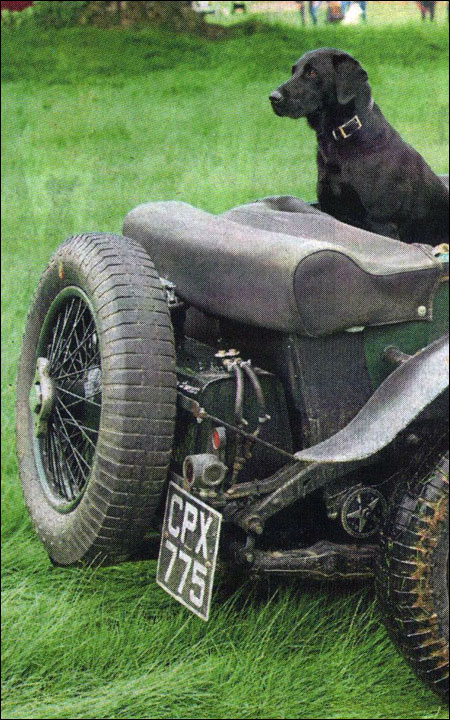Chassis no. 54 — same family ownership for 85 years
Contributed by Ian Murray
Chassis number 54 was purchased by Jack Fry in 1934. He was manager of the HRG racing team and knew various members of what had been the Bentley racing team. Chassis 54 was a competition hill climb car in the 1920s (Clare Hay's publication).
Following an accident in the late 1920s it was bought by “Scrap” Thistlethwaite who sold it, along with various other parts, to Jack Fry.

Over the years it has had three engines fitted. The original 3 litre engine was replaced by a later model with hour glass pistons, and in 1935 the current 4½ litre engine was installed, which I understand was made up of two separate engines. The top half of one and the bottom half of another being happily amalgamated by a Bentley mechanic of the day named Don Chance.
At about this time a significantly lightened fly wheel was installed. The engine, somewhat modified, is still in the car running contentedly today. It bears the number UK 3292.

Gearbox
Originally the car had and an A box. This was replaced by a very quiet D box, but this was changed for a C box at the start of the war when the car was used as a towing vehicle to pull a fire pump. (See photo, J.F Fry at the wheel, City of Chichester Auxiliary Fire Service 1939).
After the war the car worked on a market garden in Sussex towing a trailer and the C box was retained.
Body
The body came from an early 3 litre Sunbeam and is narrower than most Bentley bodies. The 4 ½ Litre radiator has been reduced in height to improve the line and sits happily with the 3 litre bulkhead. She really is a two seater with a limited amount of space in the back for luggage or a couple of Labradors!

Petrol Tank
This came off the 100mph 3 litre car which took part in the 24 hour Le Mans Race of 1925 or 1926. It was entered privately and driven by Thistlethwaite. The car had an enclosed streamlined tail which contained the petrol tank which was original and in excellent condition. Capacity 25 gallons and a genuine Le Mans tank with tie rod support running through the centre. Although damaged when the car was reversed into a concrete pillar in the early 1960s, it was restored and is still fitted to the vehicle.
In the mid 1930s Jack Fry joined forces with Marcus Chambers (of 30/98 notoriety), working together on a number of cars including CPX 755. Carious modifications were carried out including the fitting of a speed six differential inside the 3 litre banjo. The prop shaft was replaced with one from an 8 litre model and the compression was significantly raised.

It was more or less in this form that the car went to Le Mans in 1938 as part of “L’ Equipe Lapin Blanc”. The team comprised of Jack Fry as manager, Marcus Chambers, Peter Clark and a mechanic named Gibson. A certificate presented to L'Equipe Lapin Blanc is still attached to the inside of the passenger door.
In 1950 the family moved to Wiltshire and another chapter of renovation and modification began. Over the next three decades a significant amount of work was done on the car by Tony Townshend and his very able team at Elmdown Vintage Automobiles, Ramsbury Wilts. Following an encounter with a sturdy thorn hedge in 1957 a heavier front axle beam and Speed Six brake drums were fitted. A 4 ½ litre steering box replaced the original which improved the steering considerably. Later Tony Townshend fitted a 3.3 to 1 crown wheel and pinion, speed six connecting rods and pistons, more recent SU carbs and a Bosch starter.

The magneto switches and hand pressure pump handle came from “Old Number 7” as did the hand brake lever. The latter, Jack Fry subsequently gave to Jon Lander when he sold him the well-known 4½ UL 4471.
The car also carries the clock from “Old Number 7” and the exhaust silencer from the wreckage of the single seater Birkin Car removed after the fatal crash.
The car has been in the same family (Jack Fry & John Fry) ownership for 85 years Engine rebuilt by Ewan Getley, Autumn/winter 2017."

